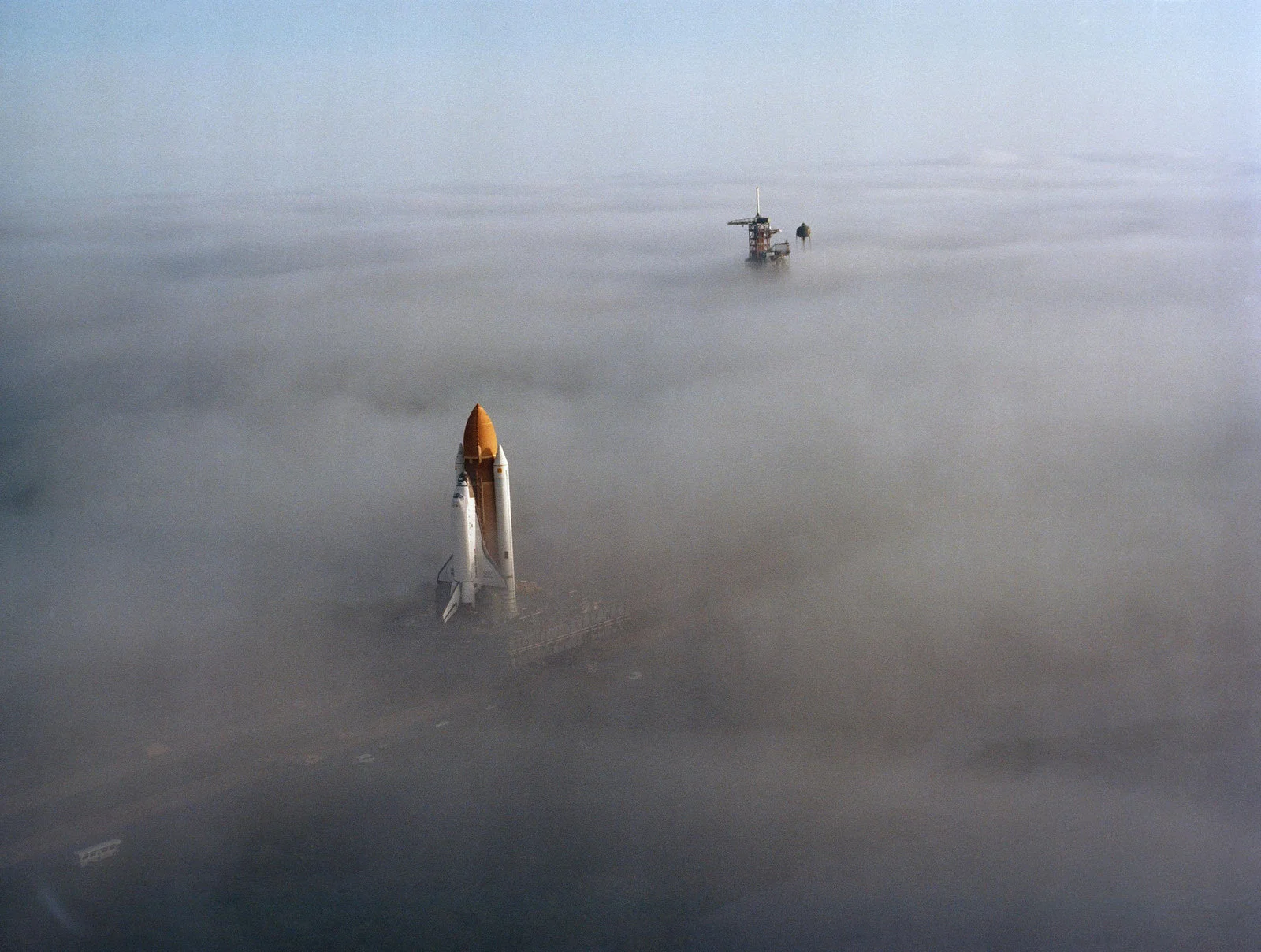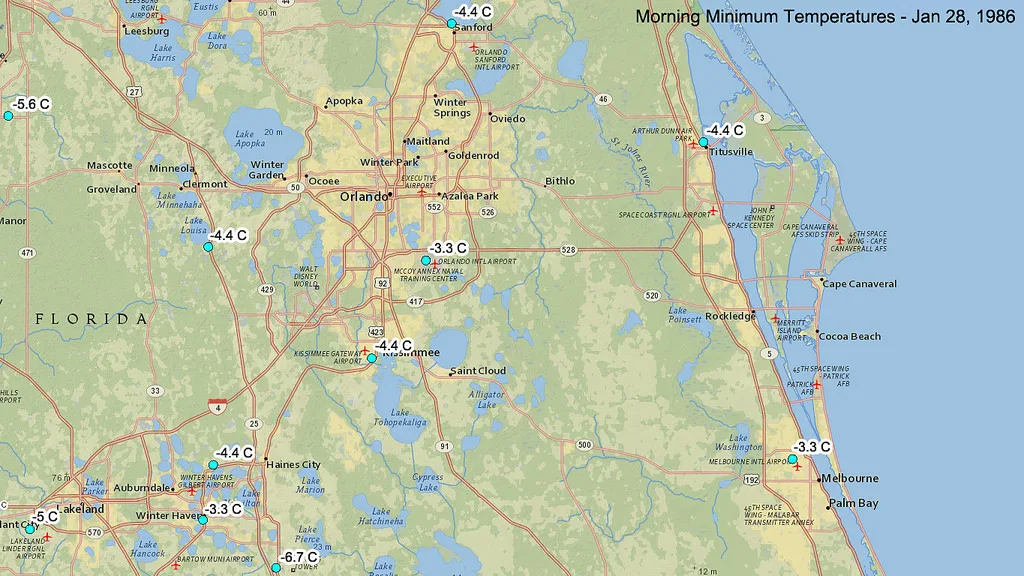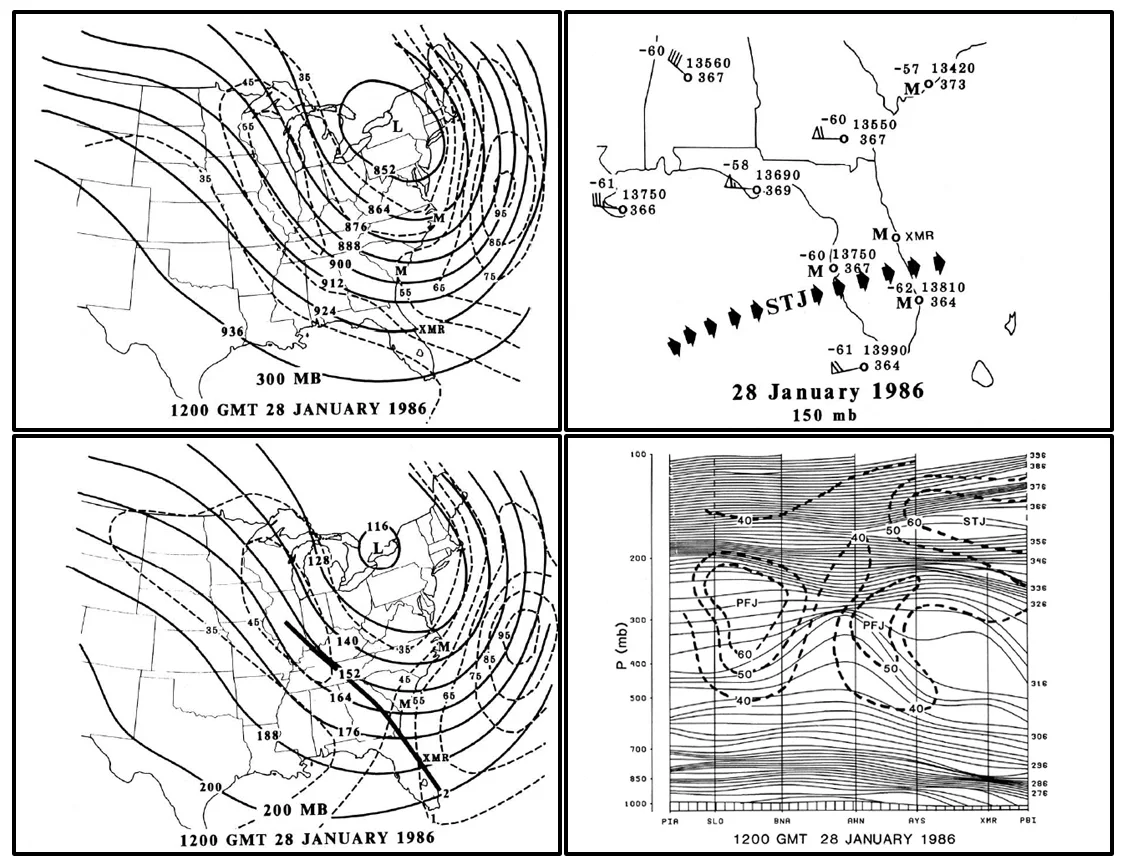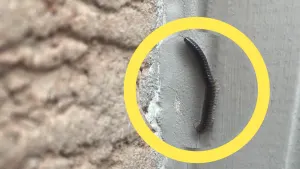
How weather played a significant role in NASA’s Challenger disaster
Thirty-five years ago, the Space Shuttle Challenger was lost, in part due to severe weather.
On the chilly Tuesday morning of January 28, 1986, seven American astronauts climbed on board the Space Shuttle Challenger for an 11:37 a.m. launch into space.
Just 73 seconds after liftoff, their mission tragically ended when the shuttle broke apart and crashed back down to Earth. Killed in the accident were Commander Francis Richard Scobee, Pilot Michael Smith, mission specialists Ellison Onizuka, Judith Resnik and Ronald McNair, and payload specialists Gregory Jarvis and Christa McAuliffe.
Many things can go wrong during a space launch.
Thousands of parts go into the construction of a space vehicle. Given the stresses put on these vehicles as they climb towards space or return to Earth, even a minor failure can turn very bad. A common refrain in the space community when something goes wrong is "space is hard."

Challenger sits on a foggy launch pad for its very first flight into space in April of 1983. Credit: NASA
So, what happened with the Challenger disaster that took the lives of seven people and grounded the shuttle program for over two and a half years?
During the investigation, NASA discovered a technical problem with one specific part of the shuttle — a rubber O-ring near the base of one of the two solid rocket boosters. These O-rings function to seal the field joints between the sections of the booster. When they are working correctly, they expand and contract quickly as the booster sections flex and shift under the stresses of launch. In this way, they maintain their seal and prevent hot exhaust gases from escaping through these joints.

A schematic of the solid rocket booster used by Challenger. The 'field joint' closest to the nozzle is the location of the O-ring that failed during launch. Credit: NASA
Although these O-rings had functioned without incident for 24 shuttle launches, there was an inherent flaw in their design that contributed heavily to the loss of Challenger. They were not rated for operations at temperatures below 4°C.
RECORD-COLD LAUNCH MORNING
Just two weeks earlier, during the launch of the Space Shuttle Columbia on January 12, temperatures at Cape Canaveral were roughly 13°C.
On the morning of January 28, however, a cold snap had enveloped parts of the U.S. Southeast, and the mercury had plunged below freezing in central Florida. To the north, Atlanta, GA, had an overnight low near -14°C, while Montgomery, AL, had a low of -9°C.
For several communities in the Cape Canaveral area, they experienced their coldest January 28 morning on record. The day retains that record even now.

Temperature records from NOAA, for the morning of January 28, 1986. Credit: NOAA NCDC
These record cold temperatures caused significant icing of Challenger's launch tower, as seen in the images below:

Long icicles hang off Challenger's launch tower (left), and some components were heavily iced over (right). Credit: NASA
Ice on the launch tower is not necessarily a problem for a launch, though. With the launch delayed to allow temperatures to warm with sunrise, the mercury managed to climb above freezing by the 11:37 a.m. launch time. It was only around 2°C above freezing, but ground crews were able to address any direct problems from ice build-up.
However, it turned out the real problem was specifically the effect the cold had on the O-ring on the right solid rocket booster. This booster remained in the shuttle and external fuel tank's shadow as the Sun rose and thus did not benefit from direct sunlight to warm up before launch.
According to the accident investigation, a "warm O-ring that has been compressed will return to its original shape much quicker than will a cold O-ring when compression is relieved." Also, a "compressed O-ring at 75 degrees Fahrenheit is five times more responsive in returning to its uncompressed shape than a cold O-ring at 30 degrees Fahrenheit." For reference, 75°F is 23.9°C, while 30°F is -1.1°C.
Thus, the cold that seeped into the O-rings during that chilly overnight caused them to stiffen and become less responsive, and therefore less capable of doing their job.
When Challenger lifted off the pad and rose into the sky, the cold O-rings on the right solid rocket booster could not respond fast enough to the stresses exerted on the booster. This opened up gaps between the lower sections, allowing hot exhaust gases to escape. Usually, these hot gases will cause the O-ring to expand more, forming a tighter seal and limiting any danger. In this case, though, the cold weather slowed the O-ring's responsiveness, allowing more gases to escape through the joint for a longer period of time, vaporizing much of the O-ring in the process.

This recovered piece of the booster shows the melted rubber from the O-ring (left) and the hole burned through the booster by the escaping exhaust gases (right). Credit: NASA
Surprisingly, if that had been the only problem the shuttle encountered, the mission would likely have still made it to space safely.
According to the NASA report, the very by-products of the burning rocket fuel and vaporizing O-ring combined to form a reasonably strong seal between the two solid booster sections. Thus, it stopped the leak.
So, if Challenger had encountered no other complications on its way to space, mission STS-51-L would have gone down in history as merely STS-51 - yet another successful shuttle flight for NASA.
The only indication anything had gone wrong would have only been discovered after NASA recovered the booster from splashdown and noticed the damage done to the O-ring.
NOT JUST COLD, BUT SEVERELY TURBULENT
Unfortunately, the cold O-ring was not the only complication the weather visited upon this particular shuttle mission.
At 37 seconds after liftoff, Challenger began passing through a series of 'wind shear' events. Wind shear is a meteorological term used to describe how winds change in direction or speed or both, over some distance in the air. The bigger the difference in speed and direction, the stronger the wind shear is. Well known as a danger to air travel, strong wind shear is often associated with 'clear air turbulence'.
A weather balloon launched a few hours before liftoff revealed strong winds aloft but did not indicate any particularly strong shear or turbulence. Reports from the time say that pilots conducting test flights across the area did experience some wind shear. However, it was said to be within acceptable limits. Thus, the upper-air weather and pilot reports cleared the controllers to go ahead with the launch.
By the time Challenger launched, unknown to everyone, conditions had become significantly worse.
In a study led by scientists at NASA's Goddard Space Flight Center, researchers performed a detailed examination of the weather conditions above the southeastern United States for the morning of January 28. They found that two different 'jet streaks' were overlapped on top of one another high above north-central Florida at the time of the Challenger launch. A jet streak is an exceptionally strong flow of wind embedded within the general flow of the jet stream.

These weather charts from the BAMS study show the pattern of the upper-level winds at 300 millibars pressure (roughly 9 kilometres altitude) and 200 mb pressure (around 12 km altitude), as well as the location of the Sub-tropical jet (STJ) above central Florida on the morning of January 28, 1986. In the lower-right panel, a cross section of the weather patterns reveals the overlapping STJ and polar front jet (PFJ). Credit: Uccellini, et al./BAMS
One of these jet streaks, the 'polar front jet' or PFJ, was blowing from a northwesterly direction. The other, the 'sub-tropical jet' or STJ, was accelerating over the region, above the PFJ, from the west-southwest. The study showed that Challenger passed through several layers of moderate to strong wind shear, which "had the potential for clear-air turbulence in north-central Florida at the time of launch."
For a full 27 seconds, the shuttle plunged through this turbulence, with the flight computer reacting precisely as it meant to for the situation, making corrections as necessary to keep Challenger on course.
As the NASA report noted, however, the wind shear "caused the steering system to be more active than on any previous flight."
This unfortunate situation put even greater stresses on the already compromised right solid rocket booster. The quick transitions between different layers of conflicting wind flow caused the booster to flex back and forth until it broke the seal formed by the melted O-ring. Exhaust gases once again escaped through the joint, and a plume of flame became noticeable by those observing on the ground.

Views from the launch site tracker camera show the emergence of the exhaust plume from Challenger's right solid rocket booster. Credit: NASA
By the time the shuttle cleared the wind shear, at just 64 seconds after launch, the plume had grown more significant as it burned through the seam and then began to burn a hole in the external fuel tank. Once breached, the fuel tank started leaking hydrogen fuel, causing more smoke to stream away from the shuttle.
All of this had gone unnoticed by both the on-board crew and flight controllers. When the order came through to throttle up for the rest of the journey into orbit, the stresses on the spacecraft proved to be too much. The damaged solid rocket booster and breached fuel tank failed, igniting the hydrogen fuel in the tank.
Having lost its fuel source, Challenger could not maintain the proper thrust to continue. The shuttle veered off course and encountered wind stresses from the airflow roughly four times greater than it was rated to withstand. The vehicle was subsequently torn apart and crashed back down to Earth. All crew members on board were lost.

Space Shuttle Challenger breaks apart, at 11:38 a.m. EST, January 28, 1986. Credit: NASA
Safety measures for space flights have significantly improved since this tragic accident occurred. Even now, 35 years later, the weather forecast remains a major influence on NASA and other space agencies' launch schedules, both public and private.
In the end, the technical flaw in the solid rocket booster O-rings set the stage for this accident (or a similar one) to eventually occur. The NASA management at the time shares some of the blame, for pushing forward with the launch despite the weather, and warnings of potential trouble. Ultimately, though, the combination of severe cold and extreme wind shear were the factors that pushed the booster to its breaking point. As a result, Challenger continues to stand as an example of exactly why launch control crews are now meticulous when it comes to avoiding adverse weather conditions.
Originally published on January 28, 2016, this article has been updated.











